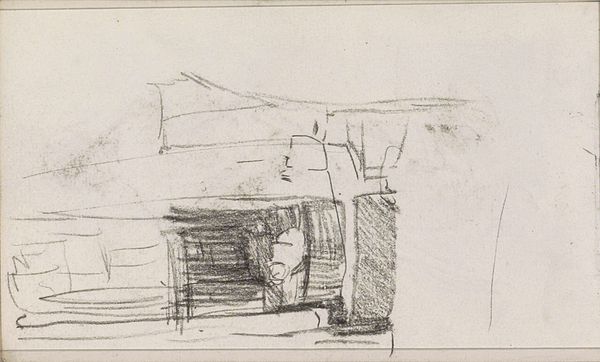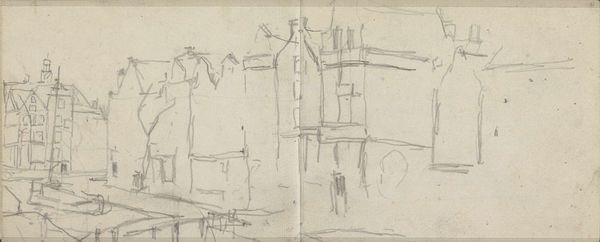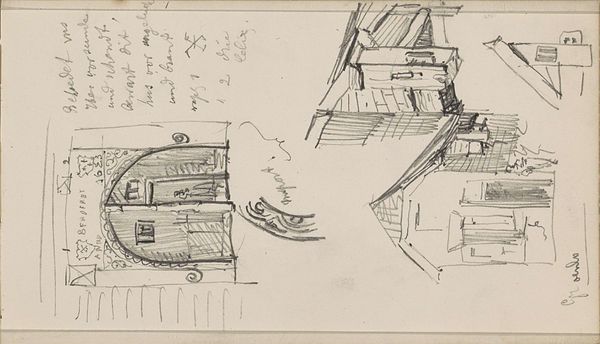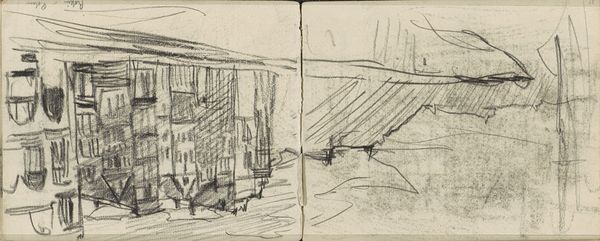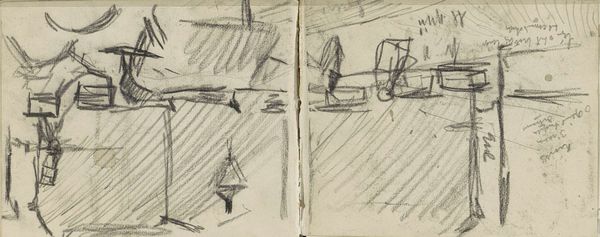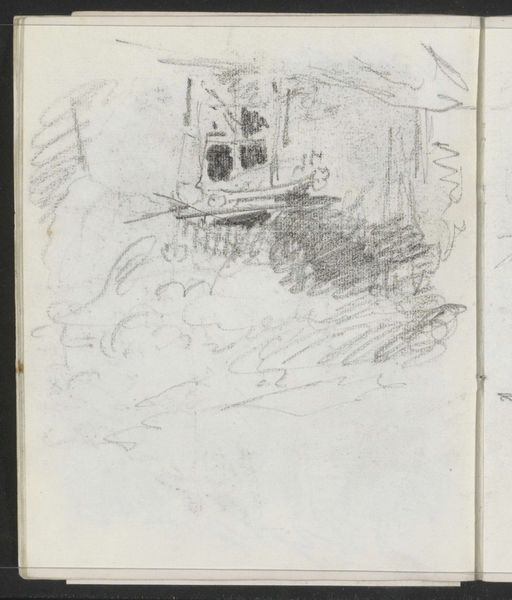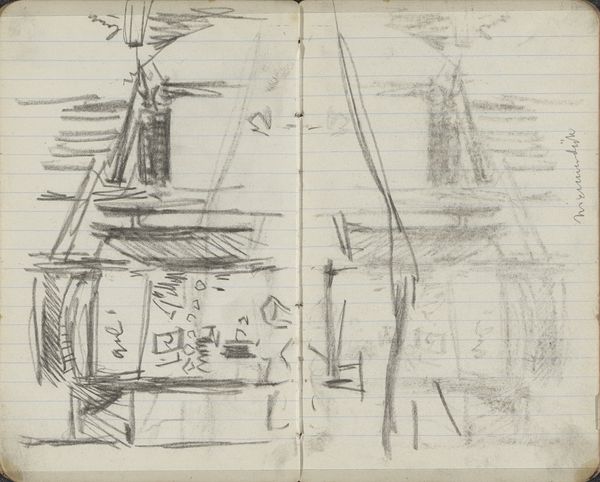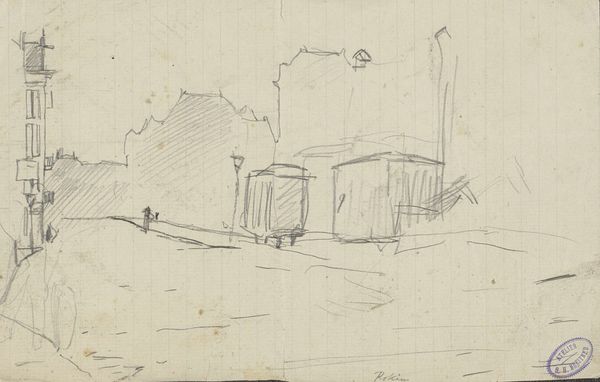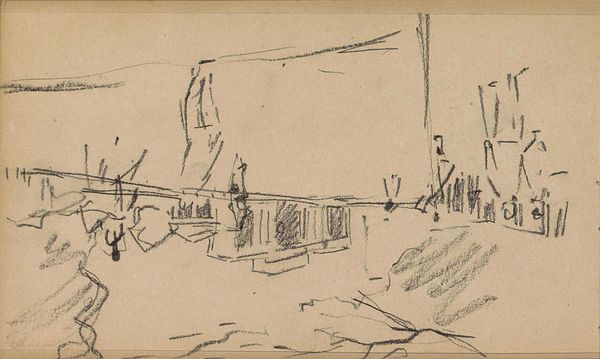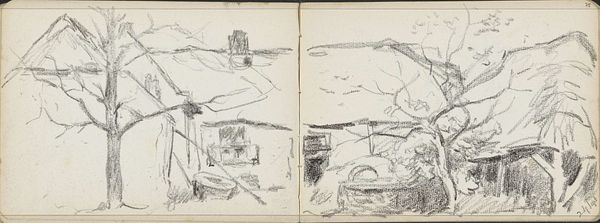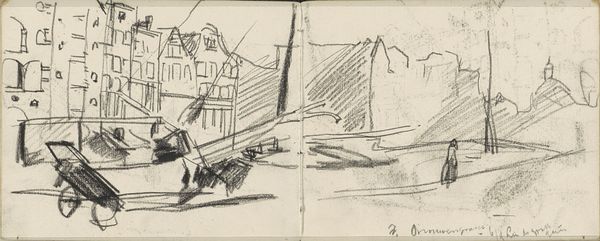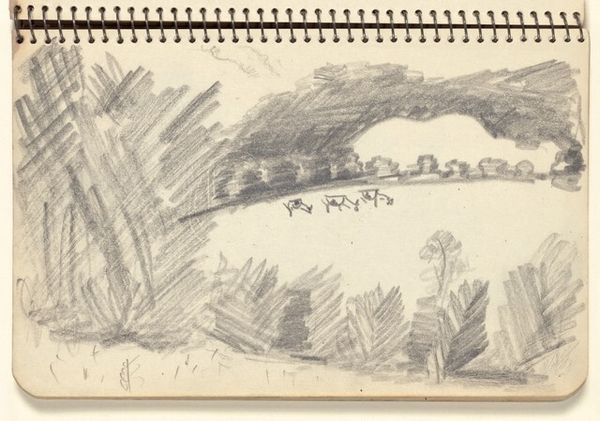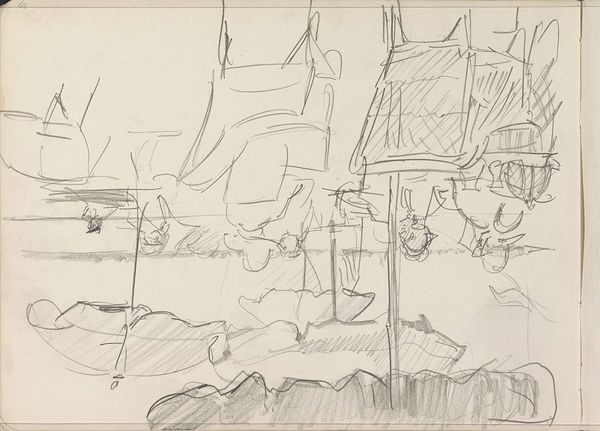
drawing, pencil
#
drawing
#
quirky sketch
#
impressionism
#
pen sketch
#
landscape
#
personal sketchbook
#
idea generation sketch
#
sketchwork
#
pen-ink sketch
#
pencil
#
sketchbook drawing
#
cityscape
#
storyboard and sketchbook work
#
sketchbook art
#
initial sketch
Copyright: Rijks Museum: Open Domain
Editor: So, this is George Hendrik Breitner’s "Gezicht op een straat," from around 1886. It's a pencil and pen drawing. It feels very… preliminary. What strikes you about it? Curator: Immediately, the *means of production* are what fascinate me. It’s a quick sketch, seemingly done *en plein air*. Note how Breitner used readily available, inexpensive materials: pencil and paper, likely a sketchbook. It underscores the democratizing potential of art creation. It asks, who has access to art making and who controls the narrative of urban experience? Editor: That’s a cool way to think about it. I was focused on it just being a rough sketch, but you’re saying it reveals something about access? Curator: Exactly! Breitner’s choice of materials speaks to his connection to the everyday, the working class districts of Amsterdam. Instead of opulent displays, it highlights the accessibility of observation. Think about the social context: this drawing isn’t just a view of a street; it's a record of a specific urban environment and how Breitner engaged with its social fabric. The roughness also reminds us of the artist’s hand. How would this street be rendered differently, say, if it was mass produced or made as an official government rendering? Editor: That’s fascinating. I hadn't considered how the simplicity of the materials connects to the subject matter and social class. The “low-ness” of the materials challenges traditional boundaries. Curator: Precisely! By embracing these humble tools, Breitner is also blurring the line between high art and documentary. It urges us to question our established art historical categories. What new narratives can emerge when we focus on process and accessibility? Editor: It makes you think about what stories get told, and *how* they are told, doesn't it? Thank you, that perspective really opens things up. Curator: And it is refreshing to see such unmediated work from this period, highlighting its historical setting in connection to Breitner’s artistic decisions regarding labor, resources, and, as you noted, class distinctions.
Comments
No comments
Be the first to comment and join the conversation on the ultimate creative platform.
